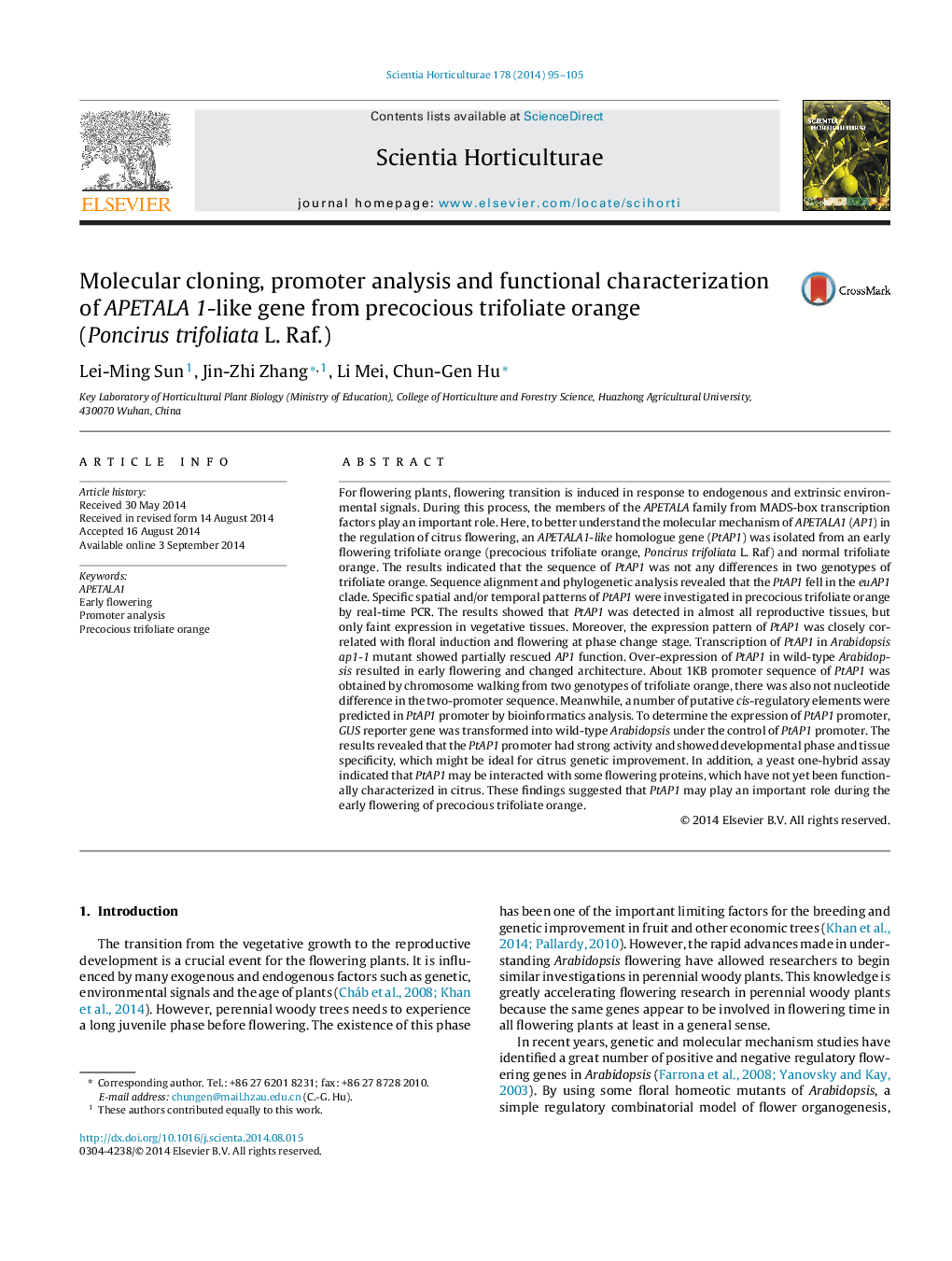| Article ID | Journal | Published Year | Pages | File Type |
|---|---|---|---|---|
| 4566566 | Scientia Horticulturae | 2014 | 11 Pages |
•Overexpression of PtAP1 in Arabidopsis resulted in early flowering and changed architecture.•The results of PtAP1 promoter analysis were obtained in transgenic Arabidopsis.•Candidates of PtAP1 promoter binding proteins were isolated by yeast one-hybrid screening.
For flowering plants, flowering transition is induced in response to endogenous and extrinsic environmental signals. During this process, the members of the APETALA family from MADS-box transcription factors play an important role. Here, to better understand the molecular mechanism of APETALA1 (AP1) in the regulation of citrus flowering, an APETALA1-like homologue gene (PtAP1) was isolated from an early flowering trifoliate orange (precocious trifoliate orange, Poncirus trifoliata L. Raf) and normal trifoliate orange. The results indicated that the sequence of PtAP1 was not any differences in two genotypes of trifoliate orange. Sequence alignment and phylogenetic analysis revealed that the PtAP1 fell in the euAP1 clade. Specific spatial and/or temporal patterns of PtAP1 were investigated in precocious trifoliate orange by real-time PCR. The results showed that PtAP1 was detected in almost all reproductive tissues, but only faint expression in vegetative tissues. Moreover, the expression pattern of PtAP1 was closely correlated with floral induction and flowering at phase change stage. Transcription of PtAP1 in Arabidopsis ap1-1 mutant showed partially rescued AP1 function. Over-expression of PtAP1 in wild-type Arabidopsis resulted in early flowering and changed architecture. About 1KB promoter sequence of PtAP1 was obtained by chromosome walking from two genotypes of trifoliate orange, there was also not nucleotide difference in the two-promoter sequence. Meanwhile, a number of putative cis-regulatory elements were predicted in PtAP1 promoter by bioinformatics analysis. To determine the expression of PtAP1 promoter, GUS reporter gene was transformed into wild-type Arabidopsis under the control of PtAP1 promoter. The results revealed that the PtAP1 promoter had strong activity and showed developmental phase and tissue specificity, which might be ideal for citrus genetic improvement. In addition, a yeast one-hybrid assay indicated that PtAP1 may be interacted with some flowering proteins, which have not yet been functionally characterized in citrus. These findings suggested that PtAP1 may play an important role during the early flowering of precocious trifoliate orange.
